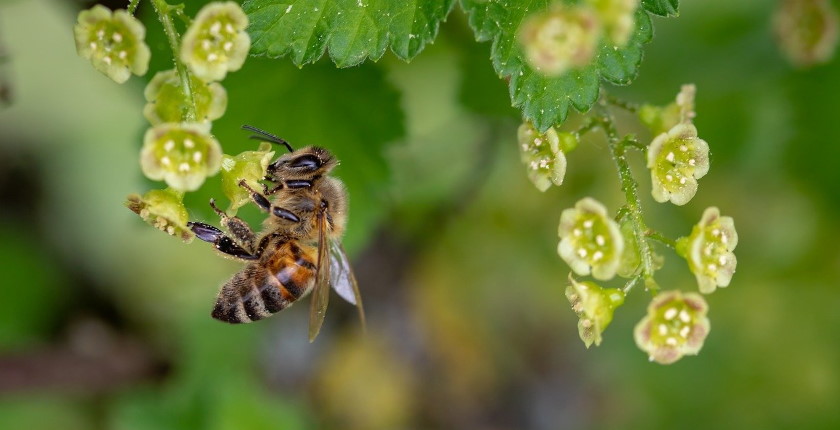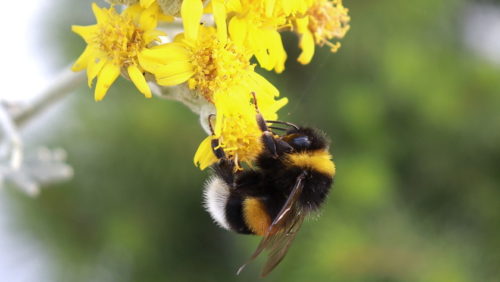
Photo: Myriams-Fotos from Pixabay
This year the annual World Bee Day will be marked for the fourth time. You can opt for simple solutions for your balcony or around the house that will contribute to their efforts.
The bee is a symbol of abundance, intelligence and diligence. It pollinates plants that are a source, directly or indirectly, of most of the human diet as well as of many natural materials that we use. The precious insects are irreplaceable in maintaining biodiversity and, with it, the natural balance. It is necessary for life on the planet as we know it to protect them from the ever-increasing risks of civilization.
Under the auspices of the United Nations, May 20 is marked as World Bee Day since 2018. In honor of a pioneer of modern beekeeping Anton Janša, a Slovenian, his birthday in 1734 was chosen as the date.
There are several thousand species of bees and bumblebees. Wild bees are as significant for pollination as their relatives from beehives. They all deserve that we return the favor a little bit.

They need quality pasturage
Bees don’t forage on all flowers. If you want to help them, there are excellent candidates for the window sill and the balcony among the aromatic herbs that we often use: sage, lavender, thyme, basil and lemon balm. Flower enthusiasts can opt for marigold or primrose.
If there is more space available, forsythia is a good choice. The ornamental shrub blossoms already in March, when in good weather bees get out of their nest from the first time to look for food. Mutual benefit can be achieved also by greening the roof, for instance the flat surfaces, with melliferous plants. There are even special packages with seeds that can be bought, and the best effect is achieved by mixing species that blossom in different times of the year.
Bees coming back from forage are usually so full that they can’t bend their abdomen, so they can’t sting
If you are thinking about planting trees, bees like fruits, especially plums, cherries, apples and chestnuts. They also feed on the flowers of black locusts, sweet chestnuts, horse chestnuts, elders, linden or basswood, lilac, paulownia, maple and birch.
Bees need dandelion, daisy, clover and other plants, so you will contribute to their efforts if you don’t mow your entire lawn at once.
They are very occupied with their work – busy as bees – so there is no worry they will attack anyone if they are not disturbed. Interestingly, those coming back from forage are usually so full that they can’t bend their abdomen, so they can’t sting.

Caution with insecticides!
In case a bee swarm invades a part of a house or an ancillary structure, one mustn’t use insecticide, but call beekeepers. They will move it to a beehive and everyone is a winner!
Insecticides are extremely dangerous for bees, especially if they are not used properly. Neonicotinoids have the worst reputation. Some of them are banned in the European Union and other parts of the world, but not completely, and there are exceptions for their utilization.
Beekeepers recommend that orchards and gardens are sprayed with chemicals only at dusk or at night, when flowers close their petals
Be sure to check the effect of the substance when you are choosing a product for your garden or orchard and consider the possibility to get some of the natural solutions that are available. Beekeepers recommend that orchards and gardens are sprayed with chemicals only at dusk or at night, when flowers close their petals. It is important to use insecticides with big caution, as poison reaches the plants under the fruit trees.
For the same reason, it is beneficial for bees, and healthy at the same time, to buy organic food from local growers.
Bee architecture
Thirsty bees will be happy to see a water source, in a shade if possible. The best version are shallow plates with pebbles or other objects on which they can land when they want to drink.
Many species nest underground, while others use thick grass, tree hollows, dry reeds and bamboo. For solitary bees, those that live alone or in small colonies, you can put thicker reed straws into a box that is open on one side and place it high in a position not exposed to wind. Another solution is a block of wood with holes drilled into it.
Bees that live in larger communities will be the most comfortable in a hollow piece of a tree trunk or a large branch if its top and bottom are sealed and it has a narrow entrance, several centimeters long, according to beekeepers.









Be the first one to comment on this article.